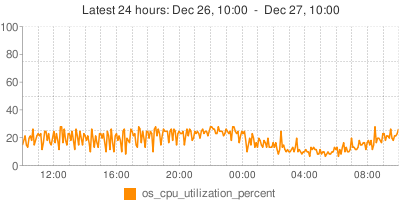Revision 208 of mycheckpoint, a MySQL monitoring solution, has been released. New and updated in this revision:
- Aggregation tables: aggregated data makes for fast reports on previously slow queries.
- Enhanced charting: interactive charts now present time stamps dynamically (see demo); “Zoom in” charts are available (see demo) on mycheckpoint‘s HTTP server.
- RPM distribution: a “noarch” RPM mycheckpoint build is now available.
- Initial work on formalizing test environment
mycheckpoint celebrates one year of existence!
Aggregation tables
I really wanted to avoid using these: everything was so more beautiful with one single dataset and dozens of supporting views (OK, the views themselves are hardly “beautiful”).
However it was impossible (for my level of expertise) to optimize query performance what with all those views on per-hour and per-day aggregation. The GROUP BYs and the JOINs did not make it possible for condition pushdown (i.e. using MERGE algorithm) where desired.
As result, mycheckpoint now manages aggregation tables: per-hour and per-day. The impact on sample taking is neglect able (making for two additional fast queries), but the impact on reading aggregated data is overwhelming. Generating a HTML full report could take a few minutes to complete. It now returns in no time. This makes charting more attractive, and allows for enhanced charting, such as zooming in on charts, as described following.
Aggregation tables will automatically be created and retroactively populated upon using revision 208. There’s nothing special to do; be advised that for one single execution of mycheckpoint, many INSERT queries are going to be executed. Shouldn’t take more than a couple minutes on commodity hardware and a few months of history.
It is possible to disable aggregation tables, or make for a complete rebuild of tables; by default, though, aggregation is ON.
Enhanced charting
Two enhancements here: Continue reading » “mycheckpoint (rev 208): aggregation tables, enhanced charting, RPM distribution”
